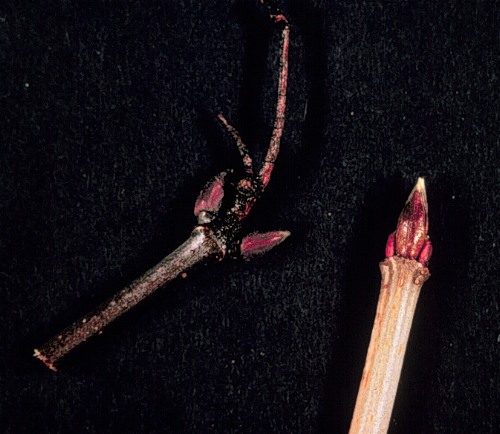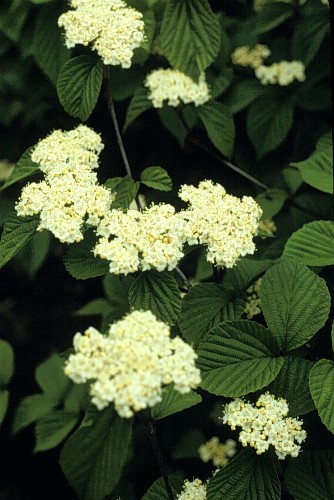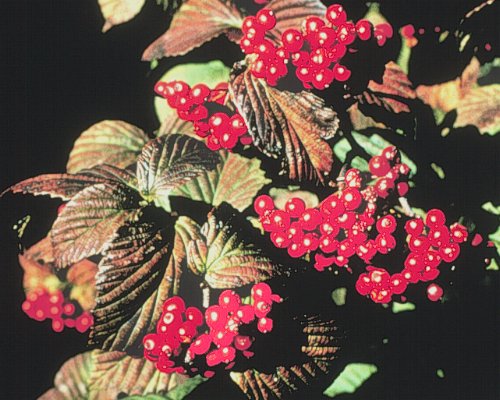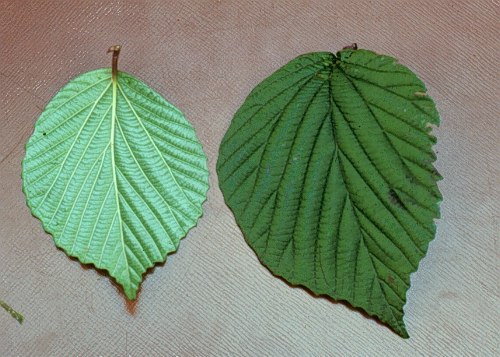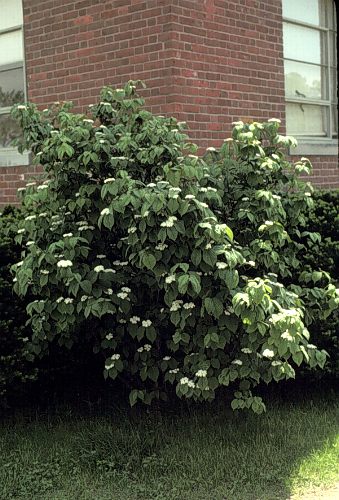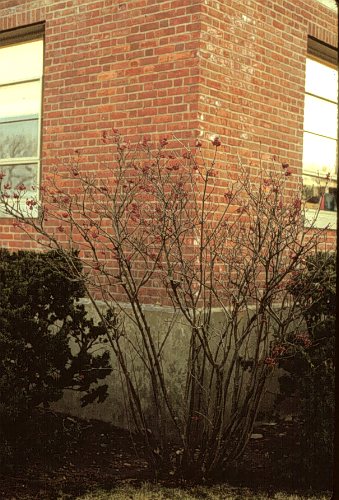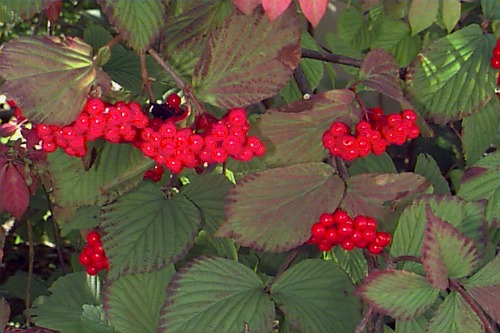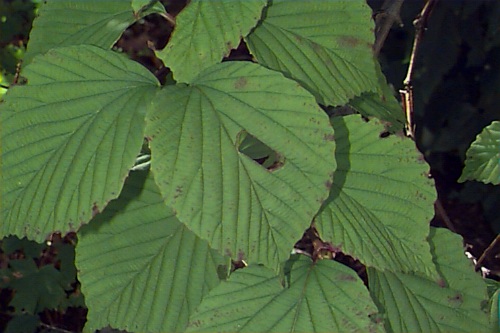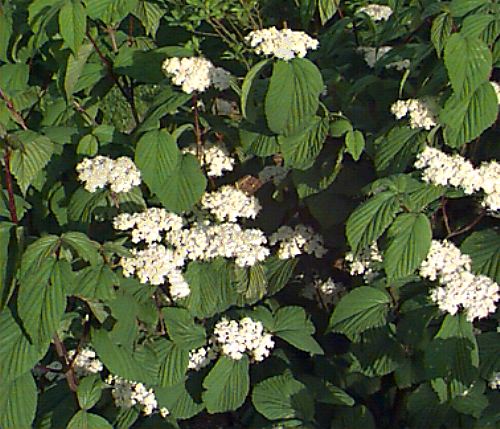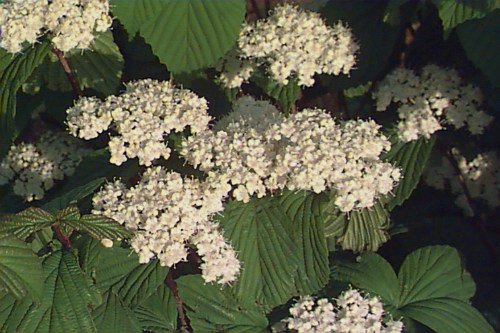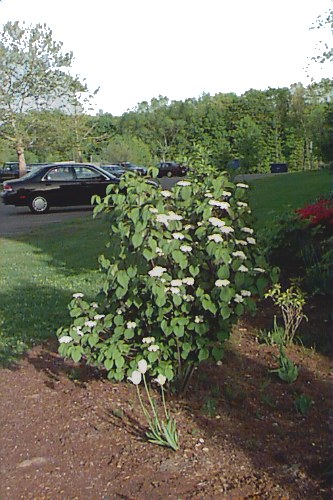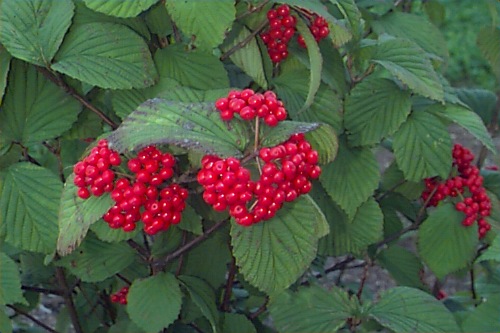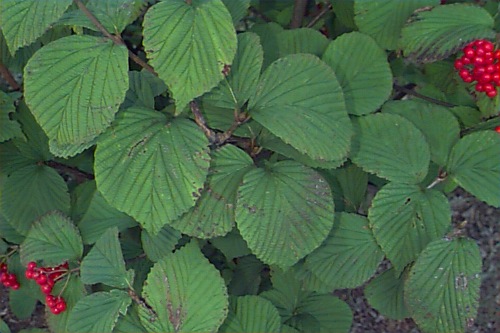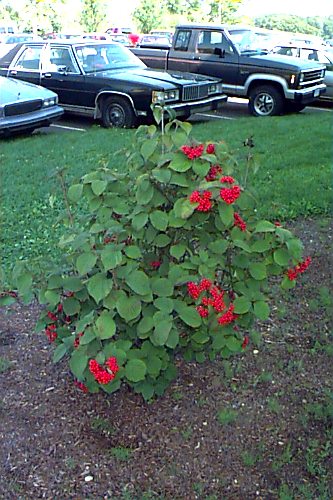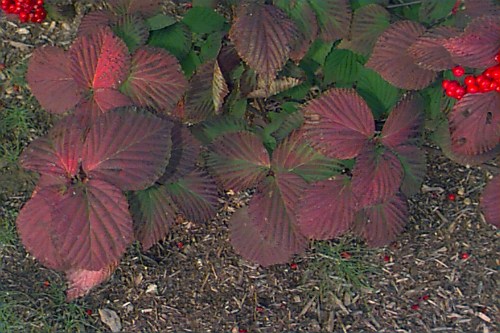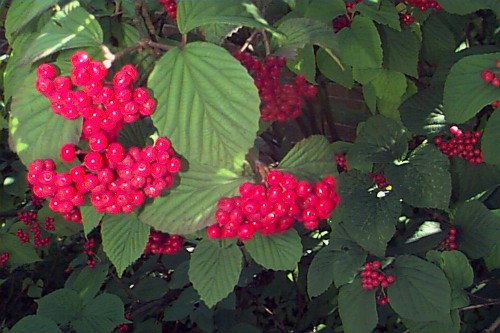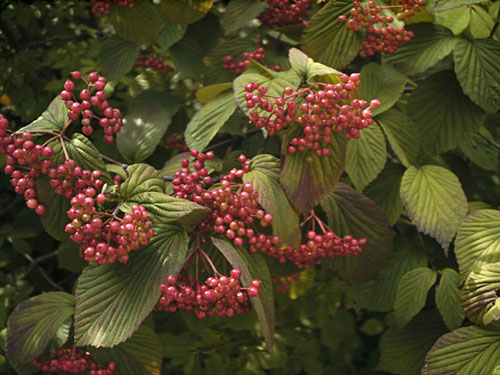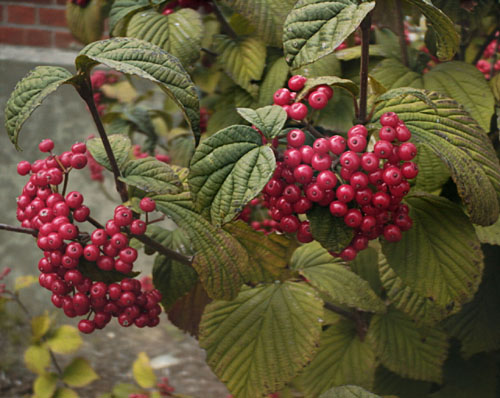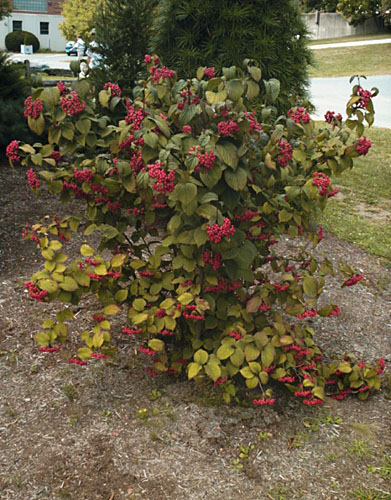Viburnum wrightii
Wright Viburnum
Caprifoliaceae
ExpandHabitat
- native to Japan
- cold hardy to zone 5
Habit and Form
- a medium-sized, deciduous shrub
- multistemmed
- overall shape is upright to rounded
- 6' to 10' tall
- not quite as wide
- medium texture
- slow growth rate
Summer Foliage
- opposite, simple leaves
- obovate leaves
- 3" to 5" long and 1" to 2.5" wide
- dentate leaf margins
- color is dark green, usually lustrous
Autumn Foliage
- red fall color
- fall color is inconsistent, but often good
Flowers
- small white flowers in flattened clusters
- bloom time is May
- flower clusters are usually numerous
- blooming can be showy
Fruit
- bright red, rounded fruit
- borne in flattened clusters
- individual fruits are only 0.33" in diameter
- fruit colors in September, persist into winter
- late in the fall the fruit shrivels and looks like red raisins
- no pubescence on pedicels
Bark
- stems are gray-brown
- stems are glabrous
Culture
- full sun to light shade
- easily transplanted and established
- does best in moist, fertile soil
- slightly acidic or neutral pH is ideal
Landscape Use
- borders
- screens
- specimen
- showy for flowers, high quality summer foliage and red fruit
- mass plantings
- groupings
Liabilities
- no serious insect or disease problems
- occasionally needs to have dead or weakened branches pruned out
ID Features
- glabrous stems
- opposite leaf arrangement
- imbricate buds
- dentate leaf margins
- most easily confused with V. dilataum and often is in the trade
- V. wrightii lacks the heavy pubescence on leaves and stems and its leaves have a waxy bloom
- the fruits of V. dilatatum are somewhat elongated and those of V. wrightii are more flattened and larger
- V. wrightii blooms before V. dilatatum
Propagation
- by cuttings
- by seed
Cultivars/Varieties
var. hessei (also listed as 'Hessei') - There may be more than one clone of this form in cultivation, but the true plant is said to be more compact with handsome foliage and glossy deep red fruit. It is not commonly offered in the trade.
